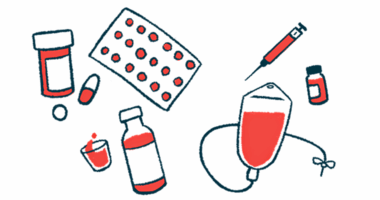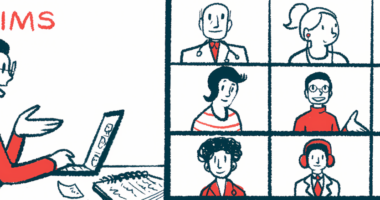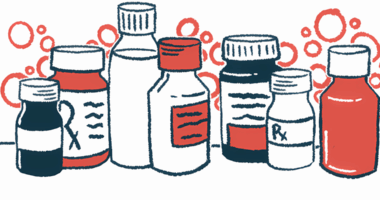Guidelines for Approval of DMT Biosimilars, Use In Europe Drafted
As the number of DMTs continues to grow, so too will the number of follow-ons, experts say

Biosimilar, or “follow-on,” forms of disease-modifying therapies (DMTs) that have been approved in a highly regulated area can be considered as safe and effective as their reference medications, according to multiple sclerosis (MS) experts.
A biosimilar is a medication that’s highly similar to an existing biological medication in terms of safety and activity, but usually comes at a lower cost.
Experts outlined this guideline and others in a recent European consensus statement aimed at generating confidence in these medications.
“The currently accessible data support the use of [follow-on] DMTs for [people with MS] to foster a fairer and more competitive market, increasing affordability of drug treatment and thus enabling better access to care,” the researchers wrote.
DMTs improving outcomes, but can be costly
The study, “Use of follow-on disease-modifying treatments for multiple sclerosis: Consensus recommendations,” was published in Multiple Sclerosis Journal.
The development of DMTs has significantly improved outcomes for MS patients in recent years. However, these medications can be costly, presenting a burden to patients and the healthcare system, and limiting access to therapies.
When a patent that protects a given DMT expires, generic or follow-on medications can also be marketed and are usually available at a lower cost. While generic forms of a lab-made medication can be deemed virtually identical to their reference medication, a follow-on for a biological therapy can only be called highly similar due to analytical limitations.
Patient and clinician concerns about potential differences between these medications can cause hesitancy to use them. Patients sometimes experience a so-called “nocebo effect,” wherein a lack of confidence fuels an anticipation of negative outcomes, thus leading to a worse experience with the medication.
As the number of available DMTs for MS grows, so will the number of follow-ons. In anticipation of this, researchers formed a task force of MS experts to generate guidelines for approving and using follow-on DMTs in Europe. Guidelines were then voted on by the force and another 19-person expert panel. All guidelines discussed in the paper were met with at least an 80% consensus during voting.
A guiding principle when developing the guidelines was that patients and clinicians should be jointly involved in choosing a DMT. Clinicians should educate the patient and help them make informed decisions, taking into account affordability and access, the researchers noted.
Clear information should always be offered to patients and doctors about the approval process for a biosimilar, with data from trials publicly available to them.
“Knowledge gaps contribute towards safety and efficacy concerns, resulting in limited prescribing of [follow-on] DMTs, nocebo effects and lack of adherence,” the researchers wrote. “It is essential to foster trust in regulatory agencies and their approval processes, while enabling [people with MS] and clinicians to critically appraise evidence.”
Approvals should be supported by rigorous safety and efficacy data, the team said in their consensus statement. In some places, larger Phase 3 clinical trials directly comparing the biosimilar and reference medication are required, whereas it’s no longer deemed necessary in other areas.
No matter what, there should always be a trial to assess the treatment’s pharmacokinetics — it’s movement into, through and out of the body — which can be further supported by post-approval safety and effectiveness data in the long term. All data should be published in peer review journals, the statement noted.
“While we welcome more efficient and accelerated [follow-on] drug development pathways, safeguards must be in place to prevent compromising product safety or efficacy,” the researchers wrote, noting that if the follow-on treatment is approved in a highly regulated area, patients can have confidence that the biosimilar is expected to be as effective and safe as the reference medication.
Task force proposal
In line with that idea, the task force proposed that it’s safe to use a follow-on medication approved in a highly regulated area the same way the reference medication would be used. Adverse reactions and bad treatment responses would be expected to occur at the same rate they do for the reference therapy.
The team suggested using biosimilars should be considered for new patients or those switching from another DMT. A switch from the reference medication to the biosimilar may be appropriate if the medication has undergone appropriate regulatory review and been deemed “interchangeable,” but data is lacking on whether multiple switching is safe.
Data related to follow-on treatments approved outside of highly regulated areas may not be as reliable and the similarity to the reference medication may not be as certain, the team cautioned.
Finally, the team suggested the real-world safety should be rigorously monitored by regulatory agencies after approval, just as it is for reference medications. Companies should be actively involved in going beyond approval requirements and continue to provide long-term data.
“Although the consensus group focused on Europe, many of the principles and statements also apply to other regions. Ideally, the consensus will encourage those elsewhere to review their framework for approval and use of [follow-on] DMTs,” the researchers wrote.







